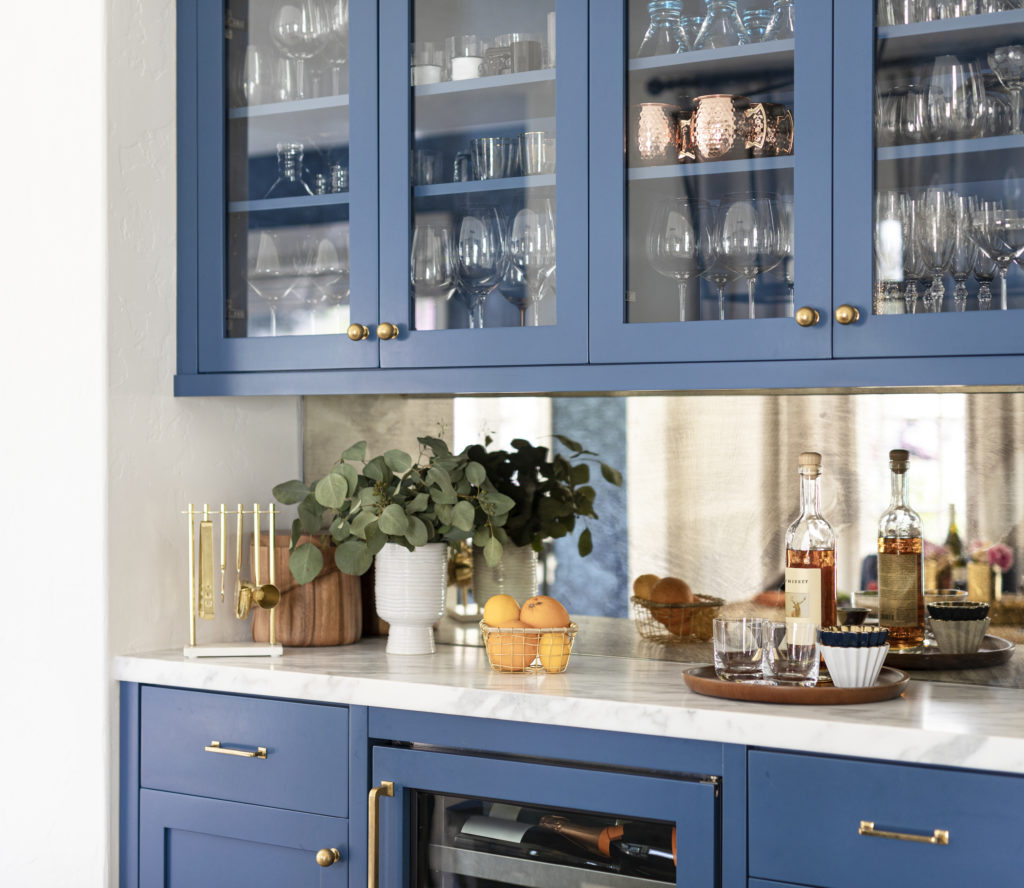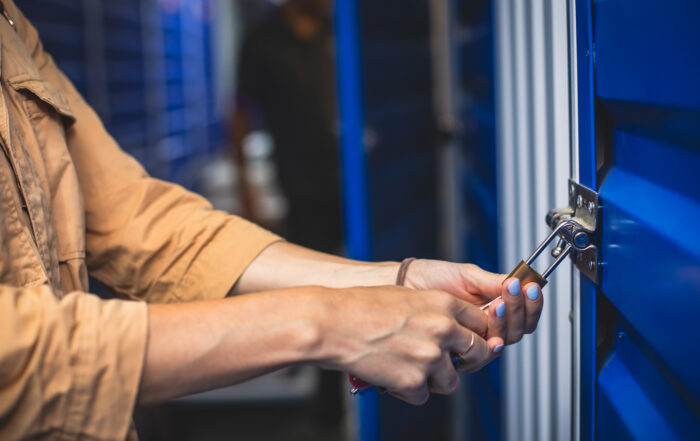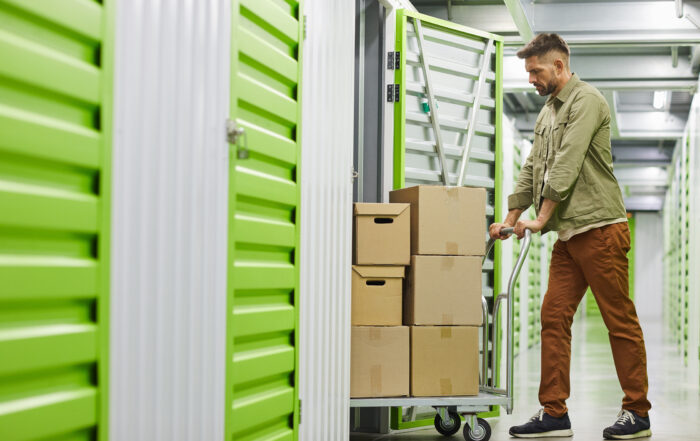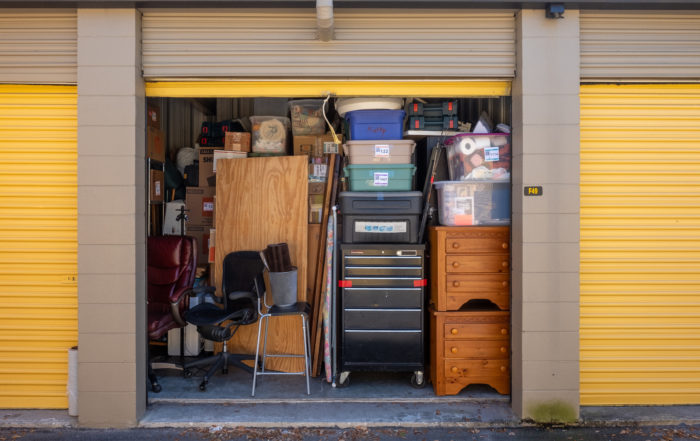How to Organize Your Kitchen

Your kitchen is the one space where you have your system — everything has its place and moving something is considered a crime. We all reach for that one cabinet for our pots and pans, pull out that one drawer for our silverware, and reach up for our glasses. In other words, we all have different places for everything. So how should you organize your kitchen? We at Albuquerque Self Storage have the answer.
Pull it Out and Purge
While you may think that it will take more time this way, pulling everything out (drawer by drawer, not all at once), will save you time in the long run. Start with one drawer or cabinet and pull everything in out. Purge what you don’t need or use (you can donate it, gift it, or toss it), and keep what you do.
The next step is crucial: Keep everything you’re saving out. Do not put it back into the cabinet or drawer. Instead, start emptying out another area of the kitchen and do the same thing. Why? Because you’ll be able to group together like objects and you’ll take a full inventory of what you have. This will help you avoid duplicates and will allow you to put everything back in its proper place when you’re finished. This also gives you a chance to wipe everything down and give it a good shine.
But how do you know what you should toss and what you should keep? We’ve got you covered.
If it’s broken, toss it. If you haven’t used it in over a year, toss it or donate it. If it doesn’t have a lid, or it’s just a lid without a base, toss it.
If you don’t need it, but it will be a good replacement for something in a couple of years, keep it.
If you love it, keep it.
When it comes to the kitchen, the only “wrong” is getting rid of things you use and need. If you love it but don’t use it often, you can still keep it. The kitchen doesn’t have a lot of room for personality sometimes, so keep those trinkets and fun utensils (if you have a place to store them).
Arrange Your Items Based on Frequency of Use
The sorting method described previously also applies to cupboard space. Plates, cups, glasses, and cereal bowls that will be used every day should be placed on shelves that are at eye level or lower. Basically, keep the essentials within arms reach and put them in a place that makes sense.
Glasses are usually the go-to items in the kitchen, so put them at eye-level and in a cupboard close to the skin (or refrigerator if you use that for water).
Items that you use less often, such as specialty glasses, chinaware, or extra bowls, can be placed behind more often used items or on a shelf higher up.
Pots and pans should be stored close to the stove, along with their lids. It helps if the drawer pulls out too, for easy access! The kitchen island is a great place to store these as well!
For baking sheets, the drawer under the stove is a great spot for them! Just don’t forget they’re there!
Items that you don’t use often can be put above the fridge or the stove. If the item is heavier, it should be in a bottom cabinet, close to the floor.
Cleaning supplies should be kept near the skin — we recommend below it — and toxic chemicals should be kept high up so pets and children can’t get into them.
If you have young children, you may want to be sure that certain items—such as plastic cups and plates—are easily accessible while more fragile items are hard to reach.
Organize Rarely-Used Items
Good dishes, china, and other special occasion items can be stored in a china cabinet, buffet table, or in cupboards that are more difficult to reach. In some kitchens, very tall cabinets provide storage that can only be reached with a stepstool.
Keeping fragile items in an out of the way area will ensure that they’re kept safe.
Organize Your Pantry
Take this time to organize your fridge and pantry as well! You may have more room in both than you originally thought. For your pantry, you’re going to want to follow the same logic: if you use it often, keep it in a convenient place.
If you have a dedicated pantry, we recommend putting the food where it makes sense. If you have kids that you trust, then put the snacks lower down for them to grab. Put canned goods and stock at eye level, as you’ll probably use them often, and keep bread within arm’s reach as well.
We recommend putting spices lower down, so you don’t have to crane your neck to see what you have, and baking goods, such as flour and sugar, in harder to reach places (unless you use it often!).
You may prefer a drawer space for spices; labeling tops of jars allows you to quickly scan for the spice you need. Other options are spice carts that sit on the counter or racks that hang over the stove. Just remember that spices need to be kept in a dry, cool place to maintain freshness.
Make use of Vertical Space
Place hooks underneath cabinets to hold mugs above the countertop, or hang a stemware rack in the same spot for wine glasses. This will free up considerable cabinet space. You could also hang adhesive hooks on the inside of cabinet doors or pantry doors to hold tools such as measuring cups, oven mitts or other kitchen gadgets. Consider using wall space or a ceiling rack to hang pots and pans. Keep in mind that any space you can use to hang something will free up flat space inside a cabinet.
Finally, if you don’t have the room, consider storing it! We’ll be happy to help you find the perfect storage unit for you.
Recent Posts
Understanding Self-Storage Lease Terms: What to Know Before You Sign
Renting a self-storage unit is often one of those tasks that feels simple at first—pick a unit, sign a lease, move your stuff in. But if you’re like most people, the fine print on that [...]
What Not to Do When Using a Self-Storage Unit: 9 Common Mistakes to Avoid
Self-storage units are a convenient and affordable way to store everything from furniture and keepsakes to business inventory and seasonal gear. Whether you’re moving, downsizing, or just trying to declutter your space, renting a storage [...]
How to Keep a Storage Unit Clean and Tidy
A self-storage unit can be a lifesaver when you need extra space, but without proper organization and upkeep, it can quickly become cluttered. A clean and tidy storage unit not only makes it easier to [...]



